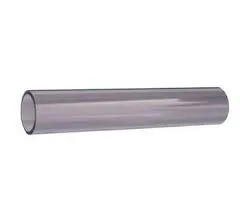Nov . 19, 2024 11:45 Back to list
pvc connection pipe
Understanding PVC Connection Pipes Applications, Benefits, and Installation Guide
Polyvinyl chloride (PVC) connection pipes have become an essential component in various plumbing and construction applications. Known for their durability, affordability, and ease of installation, PVC pipes have largely replaced traditional materials like metal and clay in modern piping systems. This article delves into the various aspects of PVC connection pipes, including their applications, benefits, and installation tips.
What are PVC Connection Pipes?
PVC connection pipes are specifically designed for connecting different sections of piping systems, primarily used for water supply, drainage, and waste management. These pipes are made from polyvinyl chloride, a synthetic plastic polymer that is resistant to corrosion, chemicals, and varying environmental conditions. The versatility of PVC makes it suitable for both residential and commercial applications.
Applications of PVC Connection Pipes
1. Water Supply Systems PVC pipes are widely used in plumbing systems to transport clean drinking water. Their resistance to scaling and corrosion ensures the water remains free of contaminants, making them a safe choice for potable water systems.
2. Drainage and Sewer Systems In drainage applications, PVC connection pipes help to efficiently channel waste and stormwater. Their smooth interior surfaces allow for unhindered fluid flow, reducing the chances of blockages.
3. Irrigation Farmers and garden enthusiasts often utilize PVC connection pipes in irrigation systems. The pipes enable efficient water delivery to crops, ensuring they receive the necessary hydration for optimal growth.
4. Industrial Applications In industrial settings, PVC connection pipes are used for transporting various fluids and chemicals. Their resistance to a wide range of chemicals allows them to function effectively in harsh environments.
5. Electrical Conduits PVC pipes are also used as electrical conduits, protecting electrical wiring from environmental damage and ensuring safety in both residential and commercial settings.
Benefits of PVC Connection Pipes
1. Durability One of the key advantages of PVC connection pipes is their long lifespan, often exceeding 50 years. They do not rust or corrode, making them reliable for long-term use.
2. Cost-Effectiveness PVC pipes are generally less expensive than their metal counterparts, both in terms of material costs and installation. Their lightweight nature reduces transportation costs, and their ease of handling simplifies installation.
3. Ease of Installation PVC connection pipes can be easily cut and joined using solvent cement or other fitting methods, streamlining the assembly process. This characteristic makes them accessible to DIY enthusiasts and reduces labor costs for professional installers.
pvc connection pipe

4. Resistance to Chemicals PVC pipes can withstand a wide range of chemicals, making them ideal for various applications, including industrial usage where exposure to hazardous substances is common.
5. Low Maintenance Once installed, PVC pipes require minimal maintenance compared to other materials. Their resistance to algae growth, corrosion, and scaling ensures that they remain functional over time with little intervention.
Installation Guide for PVC Connection Pipes
Installing PVC connection pipes involves several steps to ensure a robust and leak-free system
1. Planning Before installation, plan the layout of your piping system. Measure the necessary lengths of pipe and determine the fittings required for connections.
2. Cut the Pipes Use a pipe cutter or saw to cut the pipes to the desired lengths, ensuring clean, straight cuts for proper fitting.
3. Deburring Remove any burrs or rough edges from the cut ends of the pipes with a deburring tool to ensure a smooth fit.
4. Dry Fitting Assemble the pipes and fittings without adhesive to check for proper alignment and fit.
5. Applying Adhesive Once satisfied with the layout, apply PVC cement to the ends of the pipes and the inside of the fittings. Join the pieces together firmly, twisting slightly to spread the adhesive evenly.
6. Curing Time Allow sufficient curing time for the adhesive to set before pressurizing the system. This typically ranges from 15 minutes to several hours, depending on the manufacturer’s instructions.
7. Testing After the adhesive has cured, test the system by running water through it to check for leaks.
Conclusion
PVC connection pipes offer an array of benefits, from durability to cost-effectiveness, making them a preferred choice in various applications. As construction and plumbing continue to evolve, the importance of understanding materials like PVC cannot be overstated. By adhering to proper installation practices, homeowners and professionals alike can harness the full potential of PVC pipes for reliable and efficient piping systems.
-
High-Quality PPR Pipes and Fittings Durable ERA PPR & PVC PPR Solutions
NewsJul.08,2025
-
Black HDPE Cutting Board - Durable, Non-Porous & Food Safe HDPE Plastic Cutting Board
NewsJul.08,2025
-
High-Quality CPVC Panel Durable HDPE & PVC Panels Supplier
NewsJul.08,2025
-
Double PE Welding Rod Supplier - High Strength, Durable & Versatile Welding Solutions
NewsJul.07,2025
-
High-Quality PVC-O Pipe Supplier Durable 75mm PVC Pipe & Connections Leading PVC Pipe Company
NewsJul.07,2025
-
HDPE Drainage Pipe Supplier – Durable & Corrosion-Resistant Solutions
NewsJul.06,2025

